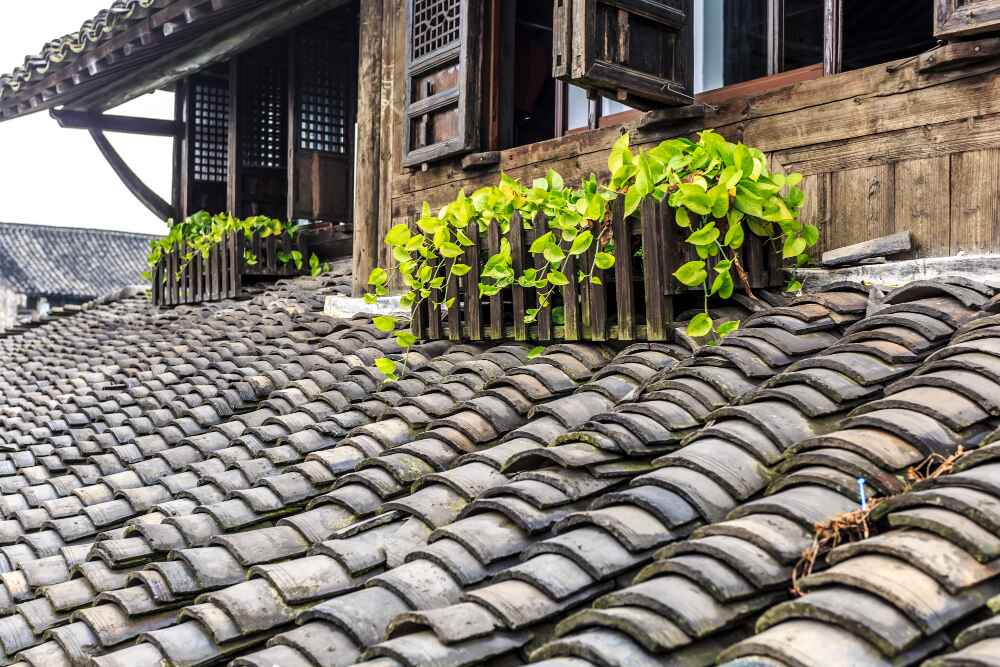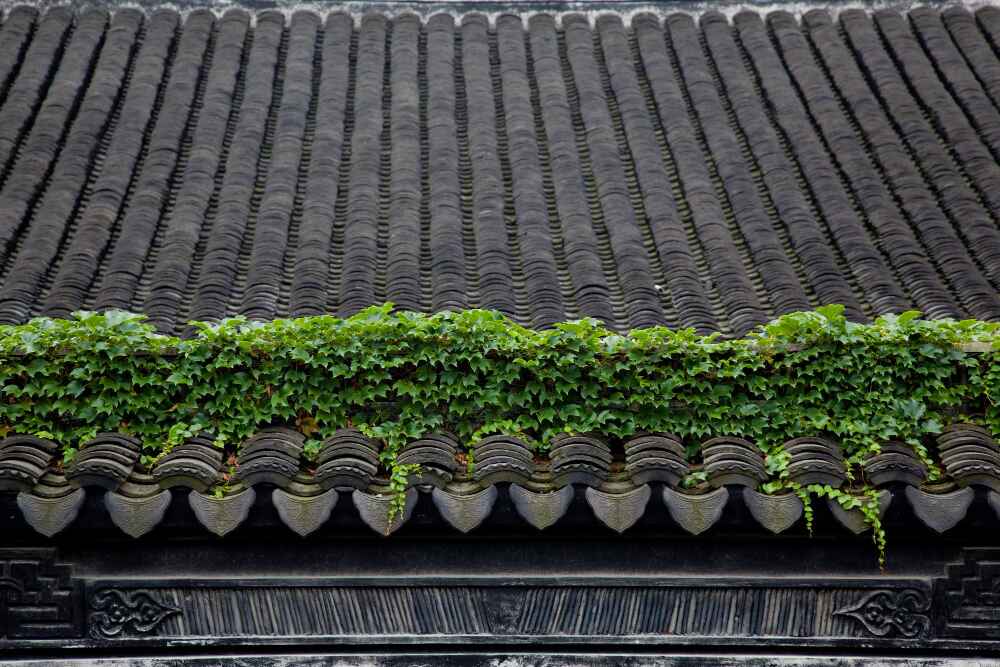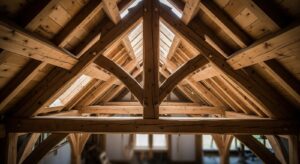If you’re one of the millions of homeowners who’ve invested in a concrete tile roof, you’ve made a smart choice. These roofs can last 50-100 years with proper care, offer excellent insulation, and add tremendous curb appeal to your home. But here’s the catch – without regular maintenance, even the most durable concrete tiles can deteriorate rapidly, leading to expensive repairs and potential structural damage.
In this comprehensive guide, we’ll walk you through everything you need to know about concrete tile roof maintenance, from seasonal inspections to professional cleaning techniques. This guide will help you protect your investment and keep your roof looking spectacular for decades to come. You can also explore our types of roofing materials maintenance guide to compare how care varies across different roofing systems.
Understanding Your Concrete Tile Roof: The Foundation of Proper Maintenance
Before diving into maintenance techniques, it’s crucial to understand what makes concrete tile roofs unique. Unlike traditional asphalt shingles or metal roofing, concrete tiles are made from a mixture of cement, sand, and water that’s molded and cured to create durable, weather-resistant roofing materials. For an industry-backed overview of tile roof maintenance standards, the NRCA offers detailed technical insights.
Why Concrete Tile Roofs Require Specialized Maintenance
Concrete tiles differ significantly from other roofing materials, which means your maintenance approach should be tailored accordingly. While metal roof maintenance focuses heavily on preventing rust and checking fasteners, concrete tile roof maintenance centers around preserving the tile’s integrity and preventing water infiltration.
The porous nature of concrete makes these tiles susceptible to:
- Moss and algae growth in humid conditions
- Freeze-thaw damage in colder climates
- Gradual weathering can compromise structural integrity
- Staining from environmental pollutants and organic matter
Understanding these vulnerabilities is the first step toward developing an effective maintenance routine that will keep your roof performing optimally for decades.
Essential Tools and Materials for Concrete Tile Roof Maintenance
Having the right tools makes all the difference in effective tile roof maintenance. Here’s what you’ll need for basic maintenance tasks:
Safety Equipment:
- Non-slip shoes with good grip
- Safety harness and rope system
- Sturdy extension ladder
- Work gloves
- Eye protection
Cleaning Tools:
- Soft-bristled brush (never use wire brushes)
- Garden hose with spray nozzle
- Pressure washer (low pressure only)
- Plastic putty knife for debris removal
Maintenance Materials:
- Concrete tile sealer
- Mild detergent solution
- Moss and algae remover
- Replacement tiles (keep extras on hand)
- Roofing cement for minor repairs
Professional Tip: Always prioritize safety over speed. Concrete tiles can be slippery when wet, and walking on them improperly can cause cracking or breakage.
Seasonal Concrete Tile Roof Maintenance Schedule
Creating a consistent maintenance schedule is crucial for preserving your concrete tile roof’s longevity. Here’s a comprehensive seasonal approach that professional roofers recommend:
Spring Maintenance (March-May)
Spring is the perfect time for a comprehensive roof inspection and cleaning after winter weather has taken its toll.
Inspection Checklist:
- Check for cracked, chipped, or missing tiles
- Examine flashing around chimneys, vents, and skylights
- Look for signs of moss or algae growth
- Inspect gutters and downspouts for proper drainage
- Check for any shifts in tile alignment
Cleaning Tasks:
- Remove debris accumulated during winter months
- Gently wash tiles with mild detergent solution
- Treat any moss or algae growth immediately
- Clear gutters and ensure proper water flow
Summer Maintenance (June-August)
Summer’s dry conditions make it ideal for deeper cleaning and repair work.
Key Activities:
- Deep cleaning with appropriate cleaning solutions
- Sealing tiles if needed (every 3-5 years)
- Addressing any repairs identified during spring inspection
- Checking and cleaning solar panels if present
Heat Considerations: During hot summer days, concrete tiles can become extremely hot. Plan maintenance activities for early morning or late afternoon to avoid burns and heat-related safety issues.
Fall Maintenance (September-November)
Fall preparation is crucial for protecting your roof during harsh winter weather.
Preparation Tasks:
- Final debris removal before winter
- Secure any loose tiles before wind storms
- Trim overhanging tree branches
- Install gutter guards if needed
- Check and clean roof valleys thoroughly
Winter Maintenance (December-February)
Winter maintenance focuses on monitoring and addressing issues as they arise.
Winter Monitoring:
- Check for ice dam formation
- Monitor for any obvious damage after storms
- Ensure proper attic ventilation
- Address any leaks immediately
Step-by-Step Concrete Tile Roof Cleaning Process
Proper cleaning is the cornerstone of concrete tile roof maintenance. Unlike the techniques used in cement tile roof cleaning, concrete tiles require a gentler approach to avoid damage.
Step 1: Safety Setup and Preparation
Safety cannot be overstated when working on any roof. Before beginning any cleaning or maintenance work:
- Check weather conditions – never work on wet or windy days
- Set up your ladder on stable, level ground
- Wear appropriate safety gear including non-slip shoes
- Have a spotter present when possible
- Plan your route to avoid stepping on fragile areas
Step 2: Initial Debris Removal
Start by removing all loose debris from the roof surface:
- Use a soft-bristled brush to sweep away leaves, twigs, and dirt
- Work from the top of the roof downward
- Pay special attention to valleys and areas around roof penetrations
- Remove any organic matter that could promote moss or algae growth
Step 3: Gentle Washing Technique
The key to effective concrete tile roof maintenance is using the right amount of water pressure:
- Begin with a gentle garden hose spray
- Work in small sections to prevent water from getting under tiles
- Use a soft brush for stubborn stains
- Avoid high-pressure washing which can damage tiles and force water under them
Step 4: Targeted Stain Treatment
For stubborn stains, moss, or algae:
- Apply specialized concrete tile cleaner
- Allow proper dwell time as per manufacturer instructions
- Gently scrub with soft-bristled brush
- Rinse thoroughly with clean water
Step 5: Final Inspection and Touch-ups
After cleaning, conduct a thorough inspection:
- Look for any tiles that may have been damaged during cleaning
- Check for proper drainage in all gutters and downspouts
- Verify that all tiles are properly seated and aligned
- Note any areas that may need professional attention
Common Concrete Tile Roof Problems and Solutions

Understanding common issues helps you address problems before they become major repairs.
Problem 1: Moss and Algae Growth
Symptoms: Green or black staining, particularly in shaded areas
Causes: Moisture retention, poor ventilation, organic debris
Solutions:
- Regular cleaning with appropriate fungicides
- Improve roof ventilation
- Trim overhanging vegetation
- Install zinc or copper strips for ongoing protection
Problem 2: Cracked or Broken Tiles
Symptoms: Visible cracks, missing tile pieces, water leaks
Causes: Freeze-thaw cycles, impact damage, age-related deterioration
Solutions:
- Replace damaged tiles immediately
- Ensure proper installation techniques
- Address underlying causes like poor drainage
Problem 3: Efflorescence (White Staining)
Symptoms: White, chalky deposits on tile surface
Causes: Mineral deposits from water evaporation
Solutions:
- Clean with mild acid solution (vinegar or specialized cleaners)
- Improve drainage to reduce water exposure
- Ensure proper tile sealing
Problem 4: Tile Displacement
Symptoms: Tiles that appear shifted or raised
Causes: Wind uplift, thermal expansion, improper installation
Solutions:
- Reposition tiles carefully
- Check and replace damaged fasteners
- Ensure proper overlap and alignment
Professional vs. DIY Concrete Tile Roof Maintenance
Knowing when to tackle maintenance yourself versus calling professionals can save you money and prevent costly mistakes.
DIY-Friendly Tasks
You can safely handle:
- Regular visual inspections
- Basic cleaning with garden hose
- Debris removal
- Minor tile adjustments
- Gutter cleaning and maintenance
Required skills and tools:
- Basic safety knowledge
- Comfort working at heights
- Appropriate safety equipment
- Understanding of tile handling techniques
Professional Services Required
Call professionals for:
- Major tile replacement
- Structural repairs
- Waterproofing and sealing
- Electrical work around roof penetrations
- Complex drainage issues
Why professional service matters:
Professional roofers have specialized training in concrete tile roof maintenance, access to commercial-grade materials, and insurance coverage for their work. They can also identify potential problems that untrained eyes might miss. For more detailed professional tile roof maintenance advice, check out Eagle Roofing’s homeowner guide.
Concrete Tile Roof Maintenance Costs and Budgeting
Understanding the costs associated with concrete tile roof maintenance helps you budget effectively and make informed decisions about your home’s care.
Annual Maintenance Costs
DIY Maintenance Budget:
- Basic cleaning supplies: $50-100 annually
- Replacement tiles: $100-300 annually
- Safety equipment (one-time): $200-500
- Tools and materials: $150-250 annually
Professional Maintenance Budget:
- Annual inspection: $200-400
- Professional cleaning: $300-600
- Minor repairs: $400-800
- Major repairs: $1,000-3,000
Long-term Investment Perspective
While concrete tile roof maintenance requires ongoing investment, it’s significantly less expensive than premature roof replacement. A well-maintained concrete tile roof can last 50-100 years, compared to 20-30 years for traditional asphalt shingles.
Cost comparison over 30 years:
- Concrete tile with proper maintenance: $15,000-25,000
- Asphalt shingle replacement cycle: $25,000-40,000
- Metal roof maintenance over the same period: $8,000-15,000
Extending Your Concrete Tile Roof’s Lifespan
Beyond basic maintenance, several strategies can significantly extend your roof’s lifespan and improve its performance.
Proper Ventilation Systems
Adequate ventilation is crucial for preventing moisture-related problems:
- Install ridge vents for hot air exhaust
- Ensure soffit vents for cool air intake
- Maintain proper attic insulation
- Monitor humidity levels in attic space
Protective Coatings and Sealers
Modern concrete tile roof maintenance includes periodic application of protective coatings:
Benefits of sealing:
- Reduced water absorption
- Enhanced UV protection
- Improved color retention
- Extended tile lifespan
Application frequency: Every 3-5 years, depending on climate and tile condition
Landscaping Considerations
Your landscaping choices significantly impact roof maintenance requirements:
Helpful practices:
- Trim trees to prevent branch damage
- Choose plants that don’t shed excessively
- Maintain proper drainage around home foundation
- Install root barriers near large trees
Clay Tile Roof Maintenance vs. Concrete Tile Roof Maintenance
While similar in appearance, clay and concrete tiles require different maintenance approaches. Understanding these differences helps you provide appropriate care for your specific roof type.
Key Differences
Clay Tiles:
- More porous and fragile
- Require gentler cleaning methods
- More susceptible to freeze-thaw damage
- Often need more frequent sealing
Concrete Tiles:
- Denser and more durable
- Can withstand slightly more aggressive cleaning
- Better thermal performance
- Longer intervals between sealing
Maintenance Technique Variations
Cleaning approach differences:
- Clay tiles need lower water pressure
- Concrete tiles can handle mild pressure washing
- Both require soft-bristled brushes only
- Chemical cleaners must be tile-specific
Repair considerations:
- Clay tiles often require complete replacement when damaged
- Concrete tiles sometimes allow for partial repairs
- Both require matching replacement tiles for color consistency
Technology and Innovation in Concrete Tile Roof Maintenance
Modern technology has revolutionized roof maintenance, making it safer and more effective than ever before.
Drone Inspection Technology
Professional roofing companies increasingly use drones for:
- Detailed roof inspections without foot traffic
- High-resolution photography of problem areas
- Thermal imaging to identify insulation issues
- Documentation for insurance claims
Smart Monitoring Systems
New technologies allow for continuous roof monitoring:
- Moisture sensors detect leaks early
- Temperature monitors track thermal performance
- Weather stations provide localized data
- Mobile apps send maintenance reminders
Advanced Cleaning Solutions
Modern cleaning products designed specifically for concrete tile roof maintenance:
- Biodegradable formulations
- Longer-lasting moss and algae prevention
- pH-balanced solutions that won’t damage tiles
- Concentrated formulas for cost-effective application
Environmental Considerations in Concrete Tile Roof Maintenance

Responsible roof maintenance includes considering environmental impact and choosing sustainable practices.
Eco-Friendly Cleaning Products
Choose cleaning solutions that:
- Break down naturally in the environment
- Don’t harm vegetation or wildlife
- Meet EPA safety standards
- Come from sustainable manufacturing processes
Water Conservation Strategies
Implement water-saving techniques:
- Use targeted cleaning rather than full roof washing
- Collect and reuse rainwater for cleaning
- Choose low-flow cleaning equipment
- Time cleaning activities to coincide with natural rain cycles
Waste Management
Proper disposal of maintenance materials:
- Recycle broken concrete tiles when possible
- Dispose of chemical cleaners at hazardous waste facilities
- Compost organic debris appropriately
- Minimize packaging waste through bulk purchasing
Regional Considerations for Concrete Tile Roof Maintenance
Different climates require adapted maintenance approaches to address local environmental challenges.
Hot, Dry Climates
Challenges:
- UV degradation
- Thermal expansion and contraction
- Dust accumulation
- Increased cooling costs
Solutions:
- More frequent sealing applications
- Light-colored tiles to reflect heat
- Enhanced ventilation systems
- Regular cleaning to maintain reflectivity
Cold, Wet Climates
Challenges:
- Freeze-thaw damage
- Ice dam formation
- Moss and algae growth
- Reduced drying time
Solutions:
- Improved drainage systems
- Preventive moss treatments
- Enhanced insulation
- Regular winter monitoring
Coastal Environments
Challenges:
- Salt spray corrosion
- High humidity
- Storm damage
- Accelerated weathering
Solutions:
- Corrosion-resistant fasteners
- More frequent cleaning cycles
- Enhanced storm preparation
- Specialized coastal-grade sealers
Integration with Other Roof Systems
Modern homes often feature multiple roofing systems that require coordinated maintenance approaches.
Solar Panel Integration
Concrete tile roofs with solar panels need special attention:
- Ensure proper tile support under panel mounting points
- Maintain clear drainage paths around panels
- Check for any tile damage from installation
- Coordinate cleaning schedules with panel maintenance
Skylight and Chimney Maintenance
Roof penetrations require extra attention:
- Inspect flashing regularly for proper sealing
- Ensure proper tile cutting and fitting around penetrations
- Monitor for any settling or movement
- Address any seal failures immediately
Gutter System Coordination
Proper gutter maintenance supports overall roof health:
- Ensure gutters can handle tile roof water volume
- Check for proper slope and drainage
- Maintain clean gutters to prevent overflow
- Install gutter guards appropriate for tile roofs
Future-Proofing Your Concrete Tile Roof Maintenance
Planning ahead helps ensure your roof maintenance program remains effective for decades to come.
Maintenance Record Keeping
Document all maintenance activities:
- Create digital records with photos
- Track cleaning and repair dates
- Note weather conditions during work
- Record product brands and application rates
- Store warranty information securely
Budgeting for Long-term Care
Plan financially for ongoing maintenance:
- Set aside 1-2% of home value annually for roof maintenance
- Create separate savings account for major repairs
- Research local contractor pricing trends
- Consider maintenance contracts for peace of mind
Staying Current with Best Practices
Roof maintenance techniques continue to evolve:
- Subscribe to roofing industry publications
- Attend homeowner education seminars
- Join online communities for peer advice
- Consult with professionals regularly
Frequently Asked Questions About Concrete Tile Roof Maintenance
How often should I inspect my concrete tile roof?
You should conduct visual inspections at least twice annually – once in spring and once in fall. Additionally, inspect your roof after any severe weather events, including high winds, hail storms, or heavy snow loads. Monthly visual checks from the ground can help you spot obvious problems early.
Can I walk on my concrete tile roof safely?
While concrete tiles are more durable than clay tiles, walking on them still requires extreme caution. Always use proper safety equipment, walk only on the lower third of each tile where it’s supported by the tile below, and avoid walking on wet tiles. When in doubt, hire professionals who have the right equipment and training.
What’s the difference between concrete tile roof maintenance and regular roof maintenance?
Concrete tile roof maintenance focuses on preserving the tile’s integrity and preventing water infiltration through the tile system. Unlike how to clean a shingle roof, concrete tiles require gentler cleaning methods and different repair techniques. The maintenance frequency and methods are specifically tailored to concrete’s unique properties.
How do I know if my concrete tiles need sealing?
Signs that your concrete tiles need sealing include increased water absorption (tiles stay wet longer after rain), fading color, white chalky deposits (efflorescence), or visible surface degradation. Generally, concrete tiles should be sealed every 3-5 years, depending on your climate and the quality of the previous sealing job.
What should I do if I find a cracked concrete tile?
Address cracked tiles immediately to prevent water infiltration. Small cracks can sometimes be repaired with concrete tile repair compound, but replacement is often the best long-term solution. Always replace damaged tiles with matching ones to maintain your roof’s appearance and performance.
Is pressure washing safe for concrete tile roofs?
Pressure washing can be safe for concrete tiles if done correctly with low pressure settings (under 1,500 PSI) and appropriate nozzles. However, improper pressure washing can force water under tiles, damage the tile surface, or dislodge tiles entirely. When in doubt, stick to garden hose cleaning or hire professionals.
How much does professional concrete tile roof maintenance cost?
Professional concrete tile roof maintenance costs vary by region and roof size, but typically range from $300-800 for cleaning and minor repairs. Annual inspections cost $200-400, while major repairs can range from $1,000-3,000. These costs are significantly less than premature roof replacement due to neglect.
Can I do concrete tile roof maintenance myself?
Many basic maintenance tasks can be done by homeowners, including visual inspections, debris removal, and gentle cleaning. However, tasks involving tile replacement, major repairs, or work around electrical systems should be left to professionals. Always prioritize safety and know your limitations.
How does concrete tile roof maintenance compare to other roofing materials?
Concrete tile roof maintenance requires more frequent attention than some materials like metal roofing but less than wood shingles. While the initial learning curve is steeper than metal roof maintenance, the long-term durability of properly maintained concrete tiles makes the investment worthwhile.
What are the signs that my concrete tile roof needs immediate attention?
Call professionals immediately if you notice interior leaks, multiple missing or severely damaged tiles, sagging roof areas, or significant moss/algae growth. These issues can quickly escalate into major structural problems if not addressed promptly.
Conclusion: Protecting Your Investment Through Proper Concrete Tile Roof Maintenance
Your concrete tile roof represents one of your home’s most significant investments, and proper maintenance is the key to protecting that investment for decades to come. Through consistent care, regular inspections, and timely repairs, you can ensure your roof continues to provide superior protection, energy efficiency, and curb appeal throughout its impressive lifespan.
Remember that concrete tile roof maintenance isn’t just about preventing problems – it’s about maximizing your roof’s performance and value. Every hour you invest in proper maintenance can save you hundreds or thousands of dollars in premature repairs or replacement costs. More importantly, it ensures your family stays safe and comfortable under a roof that performs at its peak.
The techniques and strategies outlined in this guide provide you with the knowledge needed to maintain your concrete tile roof effectively. Whether you choose to handle basic maintenance tasks yourself or work with professionals for more complex issues, the key is consistency and attention to detail.
Don’t wait until problems become visible from the ground. Start implementing these maintenance practices today, and your concrete tile roof will continue to be a source of pride and protection for your home for many decades to come.
Ready to Get Started with Professional Concrete Tile Roof Maintenance?
Your roof deserves expert care from professionals who understand the unique requirements of concrete tile systems. Our experienced team specializes in comprehensive concrete tile roof maintenance, from routine inspections to complex repairs and everything in between.






